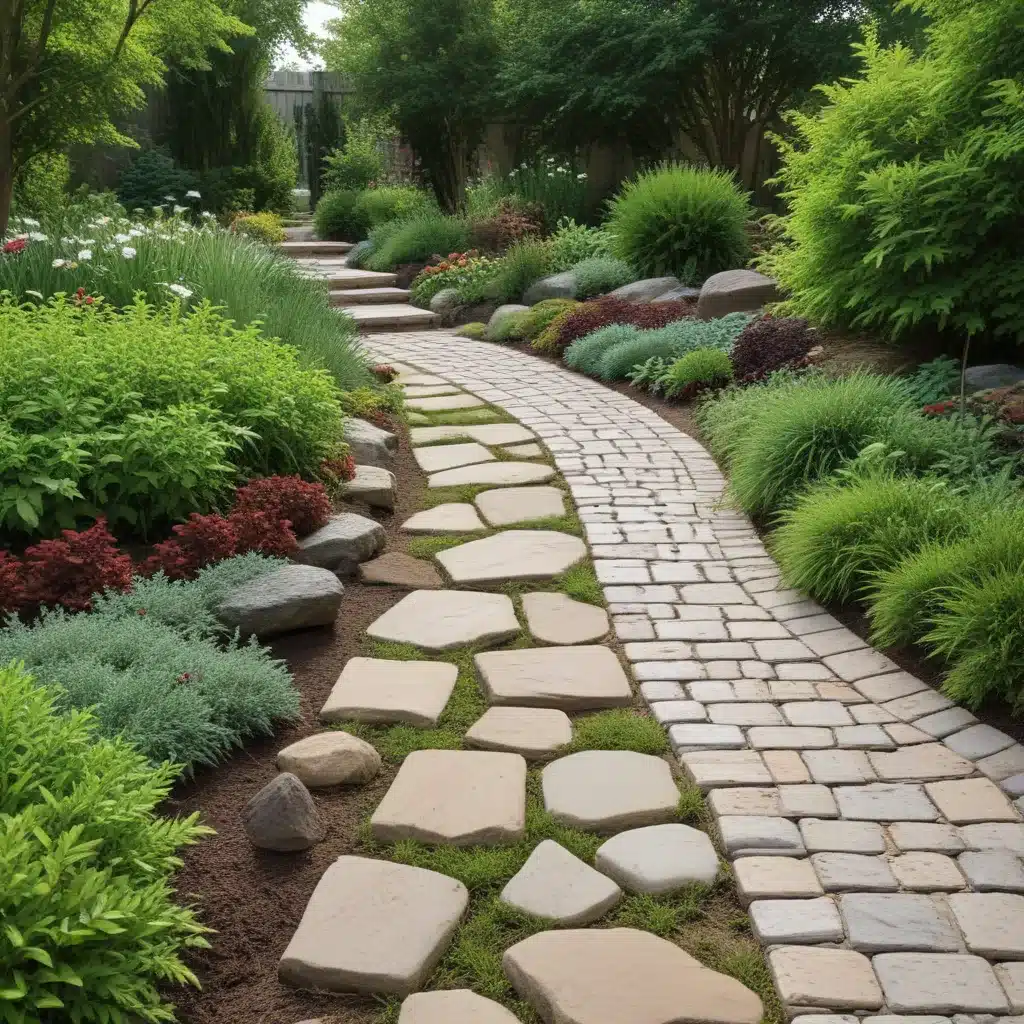
The art of landscape design is a delicate balance between the living and the inert, the soft and the rigid. At the heart of this harmony lies the integration of hardscape elements—pavers, natural stones, and pathways—with the verdant tapestry of the garden. These non-living structures form the backbone of an outdoor space, providing both functionality and aesthetic appeal. As experts in arboriculture and landscape design, the team at TriCounty Tree Care understands the transformative power of hardscapes in elevating the beauty and usability of any garden.
Hardscape Elements
Pavers
Pavers are a versatile hardscape material that can elevate the visual interest of any outdoor space. Whether crafted from concrete, brick, or natural stone, these modular units offer a wealth of design possibilities. From classic running bond patterns to intricate herringbone layouts, pavers can create a sense of order and structure within the garden. Their durability and low maintenance requirements make them an excellent choice for high-traffic areas, such as driveways, pathways, and patios.
Natural Stones
The timeless allure of natural stones is unparalleled in the realm of hardscapes. Quarried from the earth, materials like granite, limestone, and sandstone possess a unique character and texture that seamlessly integrate with the natural surroundings. Carefully selected and arranged, these rugged elements can define garden beds, construct retaining walls, and form captivating water features. The inherent variations in color and grain within natural stones lend an air of sophistication and individuality to any landscape.
Pathways
Guiding the flow of foot traffic, pathways are an essential hardscape component. Whether crafted from pavers, gravel, or natural stone, these linear elements can direct the eye and create a sense of movement throughout the garden. Strategically placed pathways can connect various areas of the landscape, encouraging exploration and discovery. The choice of pathway material should consider factors such as drainage, accessibility, and aesthetic harmony with the surrounding plantings.
Garden Design Principles
Harmony and Cohesion
Achieving a harmonious integration of hardscape and softscape elements is the hallmark of a well-designed garden. By thoughtfully coordinating the colors, textures, and forms of pavers, stones, and pathways with the living plants, a landscape can exude a sense of cohesion and visual unity. This cohesion is essential for creating a seamless and aesthetically pleasing outdoor environment.
Functionality and Flow
The strategic placement of hardscape features serves not only an aesthetic purpose but also a practical one. Pathways, for example, should be designed to facilitate smooth foot traffic and guide visitors through the garden, while patios and terraces provide functional outdoor living spaces. Considering the flow of movement and the practical needs of the garden’s users is crucial in the integration of hardscapes.
Aesthetic Considerations
Beyond functionality, the aesthetic appeal of hardscape elements is paramount. The choice of materials, patterns, and design should complement the architectural style of the home and the overall theme of the garden. Pavers, stones, and pathways can be used to create visual focal points, define distinct garden rooms, and enhance the sense of balance and proportion within the landscape.
Integrating Hardscape and Softscape
Complementary Textures
The interplay of textures is a vital aspect of harmonious garden design. Hardscape materials, with their rigid and often smooth surfaces, can be juxtaposed with the soft, flowing foliage and delicate blooms of plants. This contrast in textures adds depth, interest, and a sense of balance to the overall composition.
Blending Boundaries
Seamlessly integrating hardscape and softscape elements is crucial for creating a cohesive and visually appealing garden. Careful attention should be paid to the boundaries where these two elements meet, ensuring a smooth transition. Softening the edges of pathways, patios, and garden beds with strategically placed plants can help blur the lines and create a more naturalistic flow.
Incorporating Plantings
The thoughtful placement of plants around hardscape features can elevate the overall aesthetic and functional value of the garden. Trailing vines, cascading groundcovers, and strategically positioned shrubs and trees can soften the rigid lines of pavers, stones, and pathways, while also providing practical benefits such as shade, privacy, and erosion control.
Practical Considerations
Material Selection
The choice of hardscape materials is crucial in achieving the desired aesthetic and functional outcomes. Factors such as climate, soil conditions, and the intended use of the space should be considered when selecting pavers, stones, and pathway materials. Durability, maintenance requirements, and the overall harmony with the garden’s theme are also essential factors to weigh.
Installation Techniques
Proper installation techniques are paramount for the long-term success and functionality of hardscape elements. Ensuring proper drainage, base preparation, and adherence to industry best practices can prevent issues like settling, cracking, or weed growth. Engaging experienced professionals for the installation of pavers, retaining walls, and other hardscape features can help ensure a seamless and enduring outcome.
Maintenance and Longevity
Hardscape elements, while generally more durable than their softscape counterparts, still require periodic maintenance to preserve their aesthetic and functional integrity. Regular cleaning, sealing, and attention to any necessary repairs can extend the lifespan of pavers, stones, and pathways, ensuring that the garden’s hardscape remains a timeless and low-maintenance feature.
By thoughtfully integrating hardscape elements like pavers, natural stones, and pathways into the garden, homeowners and landscape designers can create outdoor spaces that are both visually captivating and highly functional. The principles of harmony, cohesion, and practical considerations are key to unlocking the transformative power of hardscapes. To explore the full range of hardscape possibilities and how they can elevate your garden’s beauty, contact the experts at TriCounty Tree Care today.


